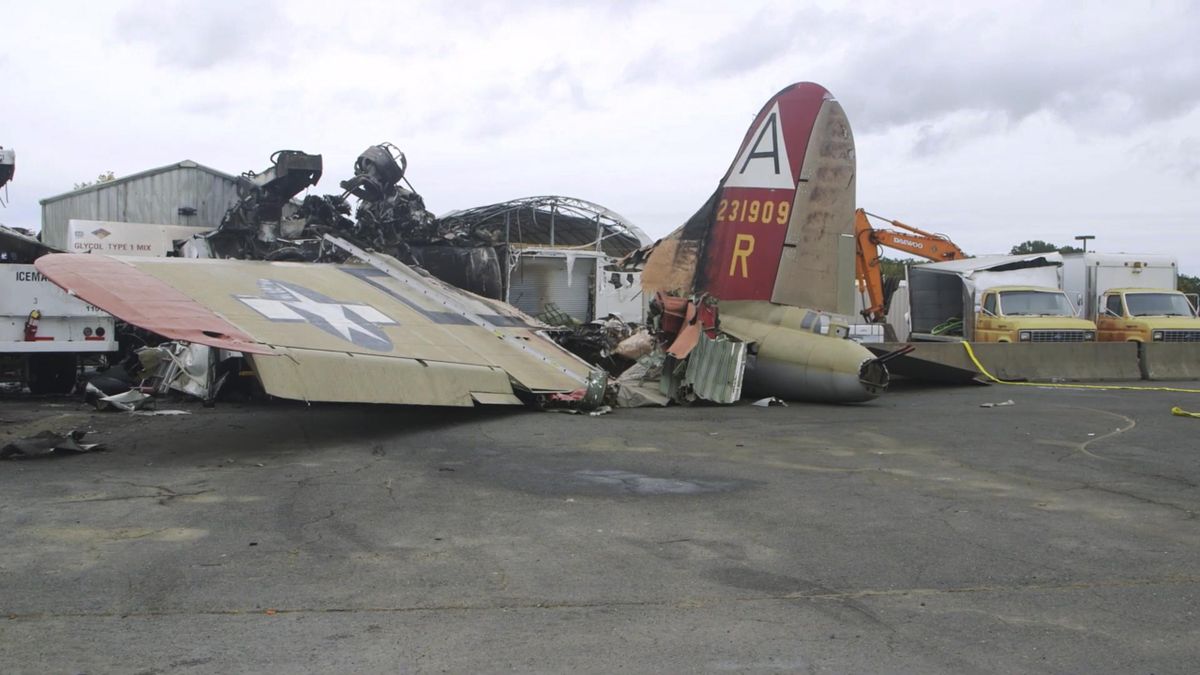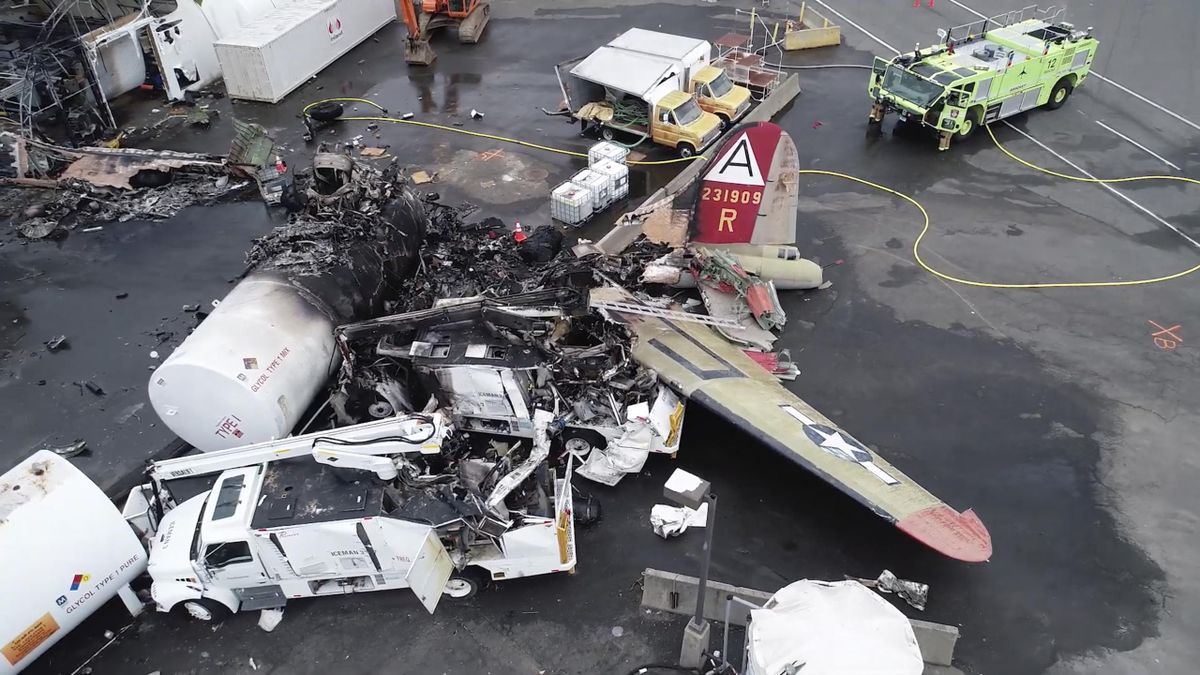This column reflects the opinion of the writer. Learn about the differences between a news story and an opinion column.
Spin Control: Time to rethink rides on World War II bombers

This is painful for an avid plane nerd to say, but the FAA should stop World War II airplanes from giving rides to passengers.
The crash of the Collings Foundation’s B-17 Nine-Oh-Nine this month was almost as inevitable as it was tragic. Seven people died, six were injured, some of them seriously. It could have even been worse if an Air National Guardsman hadn’t had the foresight to bring his fireproof gloves along for the ride and used them to open a hatch so some passengers could escape.
The crash was all the more chilling because the Nine-Oh-Nine was in Spokane a few months ago, offering the same kinds of rides to the same kinds of passengers, folks with some tie to a venerable aircraft that helped win a war:
Former air and ground crew members from that war and the riveting Rosies who put them together on the assembly lines or patched them up at places like the Spokane Army Air Depot.
Those veterans’ children, who grew up on a diet of “12 O’Clock High” and other war movies showing on their family television sets.
The children’s children, who may be the first ones World War II veterans opened up to about their experiences, explaining what they did in the war for class oral history projects.
Spokane is home to all three groups, and the vintage bombers usually make yearly stops at either Felts Field or the Geiger side of Spokane International Airport.

It can be thrilling to ride in the kind of plane that carried grandpa over Europe or the Pacific and more instructive than a textbook to understand it wasn’t like a trip on a 757 with a padded seat and built-in video screen. It’s hard to convey in the abstract the near-deafening roar of piston-driven engines, the smell of the fuel, the jolts of the takeoffs and landings.
But it’s time to face facts. A B-17 is, at its youngest, 74 years old. While most of the parts on such a plane haven’t been on it for three-quarters of a century, you can’t go to O’Reilly Bomber Parts and pick up a spare. They’re either salvaged from other bombers equally as old or recreated from old plans.
It may be considered inappropriate for me to call for these rides to end. Over some three decades, I have hitched rides for stories on just about every kind of World War II bomber that has come through Spokane, either through the auspices of the Collings Foundation, the Experimental Aircraft Association or the Confederate Air Force. Most years, at least one makes a summer stop in Spokane.
I rode on a B-17, although not the Nine-Oh-Nine. Before we took off, I remember the crew chief pointing out a window and telling us not to worry if we see oil dripping from the engines. It’s the way they lubricated in those days, he said.
I crawled through the narrow tunnel that led to the tail gunner’s position on a B-29. Not an easy journey in bumpy air. When my father, the ultimate plane nerd who served on an aircraft carrier in the Pacific, saw a picture of me framed by the plexiglass nose, he knew at a glance what aircraft I’d been in.
If anyone had ever brought a Navy Hellcat – the plane he was responsible for keeping full of ammo as they came and went from the USS Savo Island at Leyte Gulf – I would have found a way to at least look at the machine guns and sit in the cockpit.
I rode on a Collings Foundation B-25 on a flight from Seattle, popping out of the cloud cover over the Cascades and following I-90 to Spokane on a sunny day. It was a joy ride compared to the flights my father-in-law survived – if only barely – as a top turret gunner on a B-25 based in Corsica.
That same day, Spokesman-Review photographer Colin Mulvany was in the Nine-Oh-Nine, which took off second from Boeing Field. When the B-25 emerged from the clouds, we looked for the B-17 but it never appeared. When we landed at Spokane International we found out Nine-Oh-Nine had developed engine trouble – “Blew a jug,” one of the mechanics said – and had to be diverted to Everett for repairs.
All airplanes have mechanical problems. When you’re waiting in an airport and the gate agent says your flight’s delayed because of a problem with your jetliner, you might be unhappy about the wait but relieved that they found it before you took off.
World War II bombers were famous for surviving all manner of damage and getting their crews home. But they were kept ready to fly by scores of specially trained mechanics who, over time, saw every problem and knew how to fix it.
They also were built to carry people who had specific wartime jobs on them, not passengers.
The Collings Foundation and other historic aviation organizations should keep the venerable bombers and fighters in flying condition as long as possible, and take them from city to city for as long as people will come out to gaze lovingly or longingly at their propellers, their gun turrets or their nose art. The current pilots and mechanics should continue to give ground tours, and old crew members should continue to relive their stories with children, grandchildren and maybe even great-grandchildren for as long as they are able.
But even though it means the organizations will lose a source of funding from the contributions they get for short flights over the host cities, the public rides should stop. The takeoffs and landings have become too risky to use them as passenger planes.
